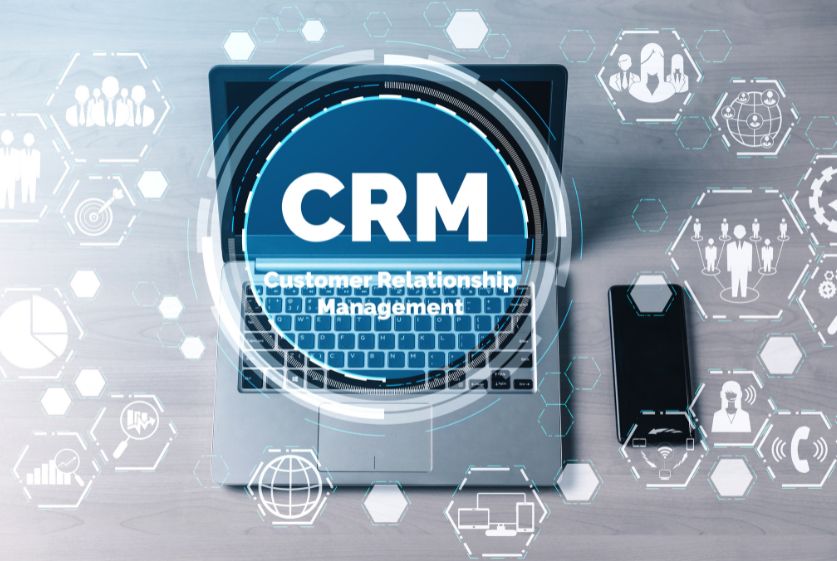The cloud has transformed how modern enterprises operate, enabling organizations to rapidly deploy systems, reduce costs, and enhance productivity. As more core business functions migrate to the cloud, understanding the relationship between enterprise platforms and the cloud is essential.
Enterprise platforms refer to the underlying infrastructure, middleware, software services, and tools organizations utilize to support business processes and applications. Whether it’s CRM, ERP, business intelligence, or custom enterprise software, today’s platforms are increasingly integrating with and leveraging the cloud.
In this article, we will examine Which Describes The Relationship Between Enterprise Platforms And The Cloud and the key benefits, challenges, and use cases of connecting enterprise platforms and the cloud. We’ll also look at best practices for migration and the future outlook for cloud-enabled enterprise platforms.
Table of Contents
Benefits of the Cloud for Enterprise Platforms
Adopting the cloud provides several advantages for enterprise platforms across cost, agility, collaboration, and security:

Cost Savings
The cloud’s pay-as-you-go pricing eliminates large upfront investments in on-premises infrastructure. Serverless computing saves money by running code only when needed. Enterprises can scale resources up or down to match demand.
Flexibility and Scalability
The cloud adds flexibility to spin services up or down on demand. Enterprise platforms can scale seamlessly to accommodate spikes in usage.
Increased Collaboration
With information stored centrally in the cloud, teams and business units can securely access data from anywhere, enabling greater collaboration.
Enhanced Security
Leading cloud providers offer robust security tools and practices exceeding most on-premises environments. Solutions include encryption, access controls, advanced threat detection, and regular security updates.
Challenges of Adopting: Which Describes The Relationship Between Enterprise Platforms And The Cloud
Despite its advantages, migrating enterprise platforms to the cloud comes with notable hurdles around control, security, integration, and compliance:
Data Security Concerns
Public cloud environments involve storing proprietary data outside the firewall, leading to fears of data leaks, breaches, and loss of control.

Integration With Legacy Systems
Connecting modern cloud infrastructure with older on-premises systems can be complicated, difficult, and risky.
Loss of Control
There is often reluctance within enterprises to rely on an external vendor’s cloud rather than owning and operating in-house infrastructure.
Compliance Issues
Cloud migration introduces new compliance requirements for security, privacy, sector-specific regulations, and cross-border data transfers.
Types of Cloud Deployments for Enterprise Platforms
There are three primary cloud infrastructure models to support enterprise platforms:

Private Cloud
A private cloud consists of dedicated cloud resources run solely for one organization, managed internally or by a third party. A private cloud provides the control and customization of an on-premises data center with the scalability of cloud computing.
Public Cloud
A public cloud enables enterprises to access computing resources owned and operated by cloud providers like AWS, Microsoft Azure, or Google Cloud Platform. Resources are delivered over the public internet on a pay-as-you-go basis.
Hybrid Cloud
A hybrid cloud combines public and private clouds, letting organizations run sensitive applications and data in a private environment while leveraging the public cloud for other needs. Workloads can shift between clouds for greater flexibility.
Examples of Enterprise Platforms Leveraging the Cloud
Many core enterprise platforms are embracing cloud-native architectures:
CRM and ERP Systems
Leading CRM and ERP platforms like Salesforce, SAP, and Oracle leverage the cloud for greater performance, availability, collaboration, and access to real-time data.

Business Intelligence and Analytics
Cloud data warehouses from Snowflake, Big Query, and Redshift make BI insights more accessible to organizations of all sizes while enabling large-scale analytics.
Application Development Platforms
Developers are increasingly relying on cloud-based tools and platforms like AWS, Azure, and Google Cloud to rapidly build, test, and run applications.
Best Practices for Migrating Enterprise Platforms to the Cloud
For a successful migration of enterprise platforms to the cloud, companies should follow these best practices:
Assess Readiness
Audit existing infrastructure, evaluate workload suitability, and identify prerequisites to avoid surprises down the road.
Plan Security Controls
Define and implement strong identity and access management, network security, encryption, and monitoring based on a shared responsibility model.
Test Extensively
Thoroughly test workloads at all stages to uncover integration issues, performance bottlenecks, and regression bugs.
Train Employees
Provide sufficient training to help teams adopt and utilize new cloud technologies and processes.
Develop Exit Strategy
Create a plan to potentially repatriate data and services if needed in the future for strategic, compliance, or financial reasons.
The Future of Enterprise Platforms in the Cloud
The shift towards cloud-enabled enterprise platforms will accelerate as organizations seek faster innovation, greater workforce mobility, and deeper insights from data. Serverless architectures, containers, and microservices will enable more modular and scalable cloud platforms. Security, governance, and management tools will improve as cloud providers cater to enterprise clients.
Hybrid models will dominate to bridge legacy systems and private data centers. The cloud will become an indispensable foundation underpinning enterprise technology.
Conclusion
Migrating enterprise platforms to the cloud unlocks substantial benefits but also poses challenges around control, security, integration, and compliance. Private, public, and hybrid cloud models provide options to optimize the risk/reward trade-off. Following best practices around readiness assessment, security, testing, training, and exit planning enables successful outcomes.
As platforms continue adopting cloud-native designs, enterprises will achieve heightened agility, productivity, and speed of innovation. The cloud revolution shows no sign of slowing as the foundation for next-generation enterprise technology strategies.
FAQs
What are the main benefits of the cloud for enterprise platforms?
The cloud provides major advantages around cost savings, flexibility, scalability, collaboration, and enhanced security.
What are some key challenges when moving enterprise platforms to the cloud?
Top challenges include data security fears, integration with legacy systems, loss of control, and increased compliance burdens.
Which type of cloud deployment is best for enterprise platforms?
It depends on the specific requirements, but hybrid cloud models are popular to balance public cloud benefits with private environments for sensitive workloads.
What steps can organizations take to migrate enterprise platforms successfully?
Best practices include assessing readiness, planning security controls, extensive testing, employee training, and developing an exit strategy.
What does the future look like for enterprise platforms and the cloud?
The cloud will become indispensable as the foundation for enterprise platforms. Key trends are increased modularity, serverless computing, and hybrid models.









